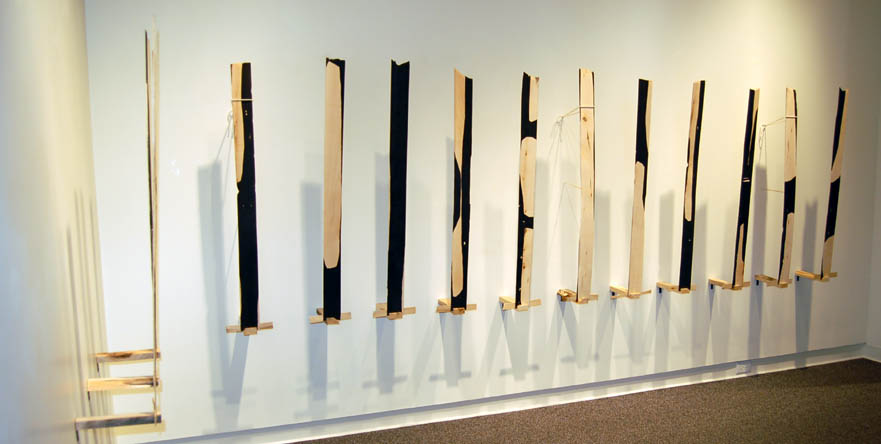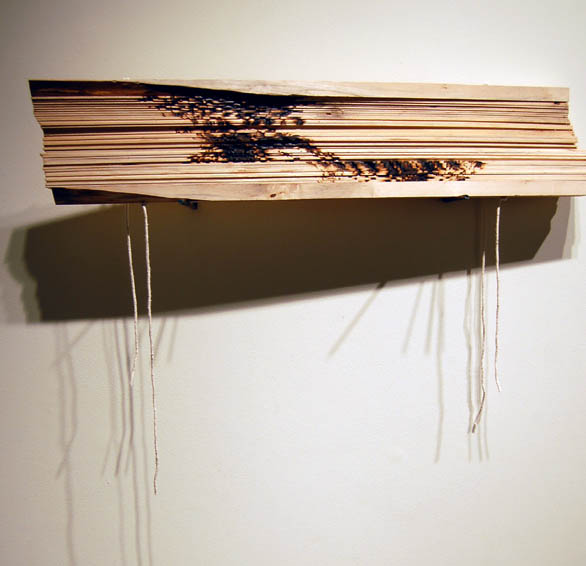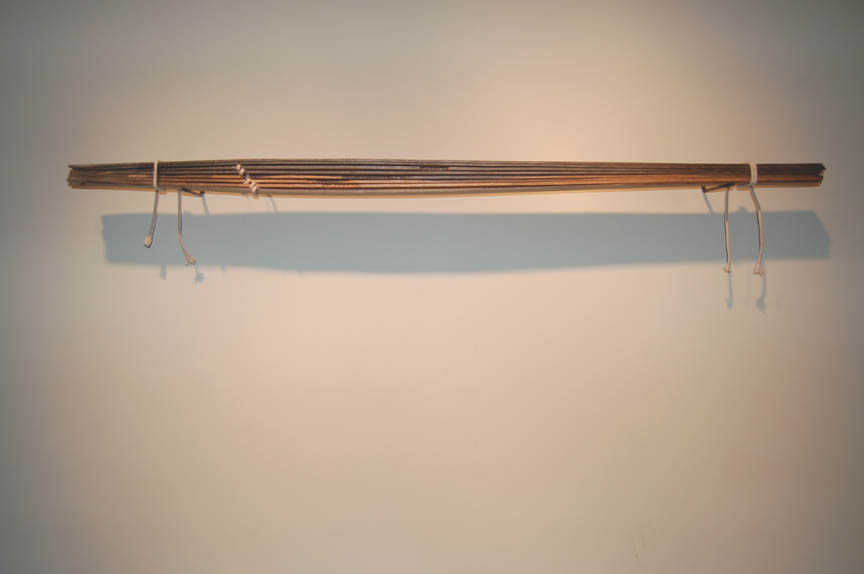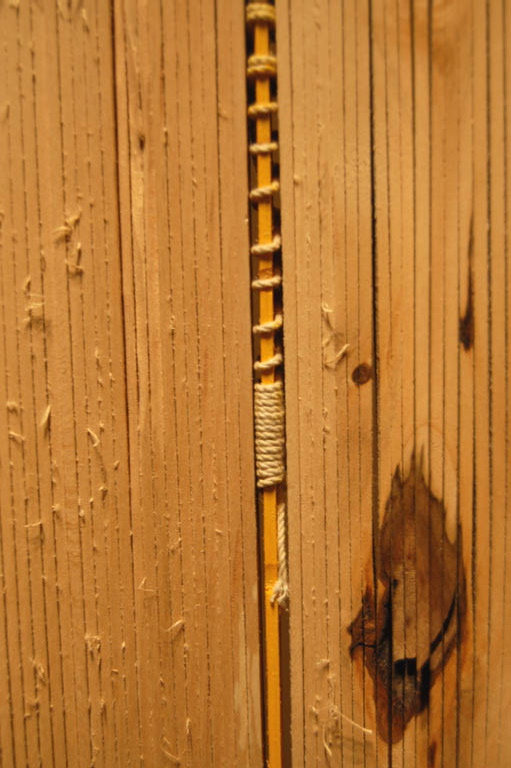The Life of the Body: Cecilia Ramon, Besides Fear
Cecilia Ramon's beautiful sculpture exhibition "Besides Fear" runs through April 29 at the Duluth Art Institute at the Depot building on 506 W. Michigan Street, Duluth.







Wood is a cellular material, once living. Cecilia Ramon uses it as a stand-in for flesh, but also as itself, an entirely different kind of living being, almost fragrant with its difference.
This is a complex show, and a very simple one. It’s charged with a field of meanings, some of which arise from the artist’s personal experience of political tyranny. It has, however, other meanings as well, dependent on the qualities of the materials and their handling, that will be clear to any one.
This all sounds too cryptic. I’ll try to be clearer, though cryptic is the impulse that arises from experiencing this work. You don’t want to overstate, or overload the work with interpretation.
The show is made up of maybe a dozen works constructed from very thinly sawn flitches of wood—white cedar, it looks like, but it could be other things. Sometimes the bundle is tied with cotton sash cord or similar kinds of rope; sometimes the bundle has maybe a colored strip inserted deep into it, red or yellow. Sometimes the edge of the bundle of wood slats is hacked, or burned. Occasionally the rope hangs down. Often it’s elaborately knotted. The bundled pieces lie on sharpish bits of steel that protrude from the gallery walls.
A couple of the works are, say, exploded—similar collections of strips of thinly sawn wood, but mounted singly, at the bottom of the strip, fastened to the wall. These strips stand precariously, or are tied or pegged up; in one very large installation they’re mounted by their narrow bottom edges to two walls of a room, and arch out, bobbing, bent, abject but resilient, filling the room so any attempt to move among them must be marked by elaborate care. On the wall is a Buddhist quote about crossing the current without pushing forward, and without staying in place.
Ramon says that these works are about overcoming fear—specifically, the fear she felt during the years of the disappearances in Argentina, her home country, when death squads and the police were repressing dissent. They don’t explain themselves further, even with titles. They only act out their actual qualities: raw surfaces, fine grain, the cells of living things; dry surfaces, absorbent. Springy. Damaged. Fragile. Bound. The standing-slat piece has a kind of incipient pattern of flat black paint that leaves ovals and slivers of the wood bare, and has a rhythm like dancing, syncopated like tango.
Ramon says, “Space in the mind cracks open the illusory solidarity of fear.”
These objects are very beautiful– almost, what would you say, wastefully beautiful, they have excess beauty that seems irrelevant to their immediate mission but of course it isn’t. Work like this, anything that it is, matters. And beautiful, then, matters. How the body pays attention to both the mind suffusing it–a governing force–and to the matter that it finds under its hands–a gift: Ramon seems very conscious of this. She also is a dancer and teaches dance. There’s mindfulness here, a saddened but expanded mindfulness that pays a broader attention than is usually possible.
Ramon notes, “I grew up with the experience of the profound human violence of the 1976 – 1984 Argentine dictatorship. In my adulthood I have become increasingly interested in the root of extreme emotion and in the possibility of transforming the negativity that is expressed in the mind/body continuum.” She speaks of the mind protecting itself though these constructions, “cleaning” itself. Other South American artists, such as Lygia Clark, have used constructed objects to heal the sad breakage of mind and body. Ramon’s impulses seem similar.
“Besides Fear” does work. Through its images of breakage and splitting, and care and binding, and secrets and survival, it carries one through to a sense of what survives, the inevitability of such survival. Where there’s life there’s hope, as my mother used to say.